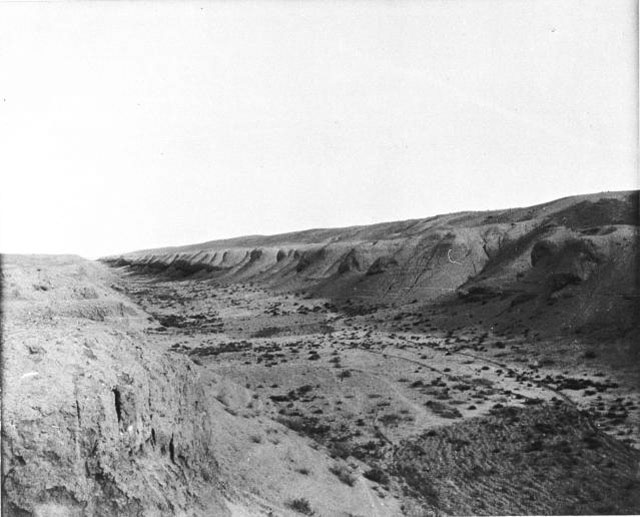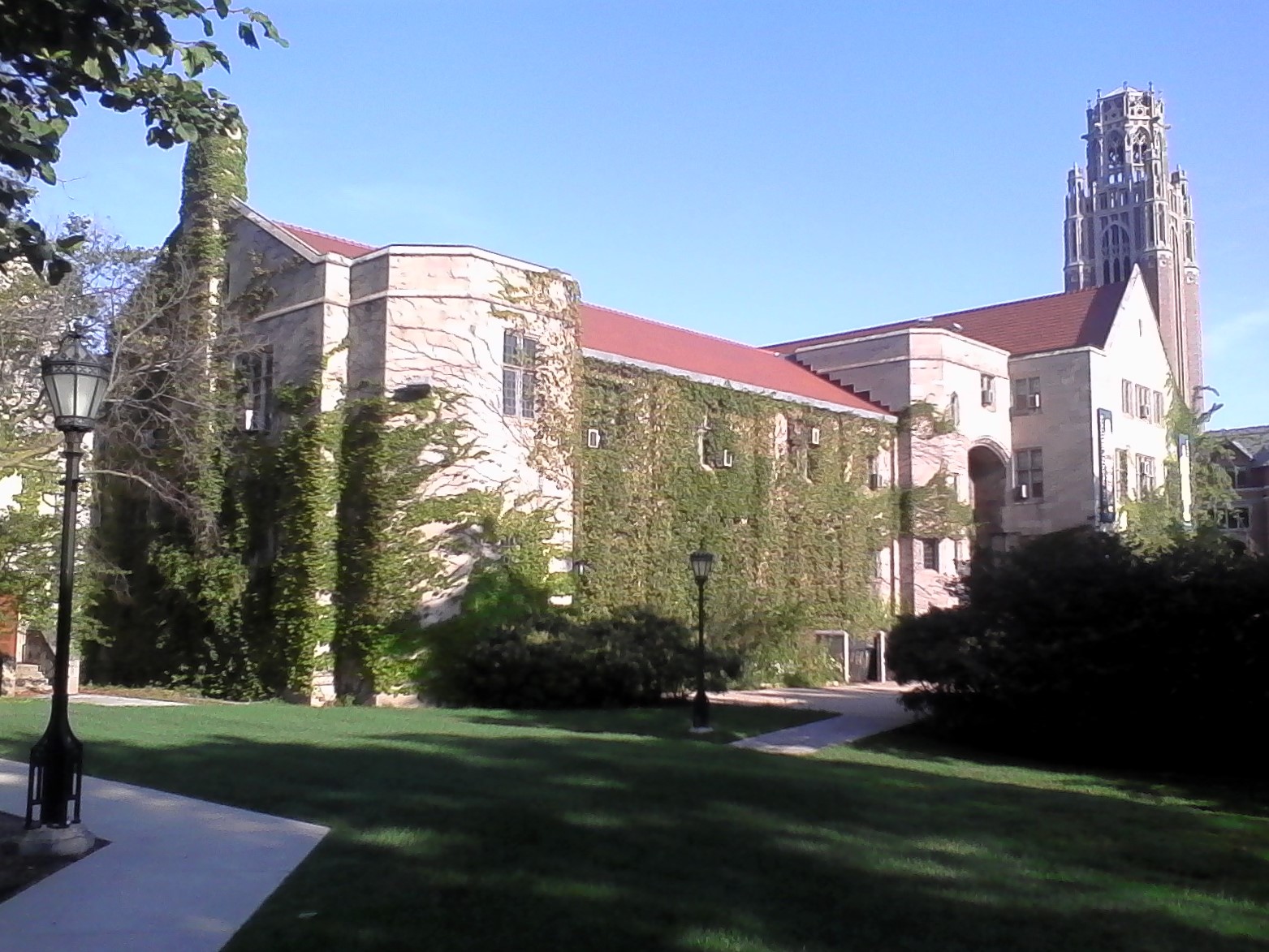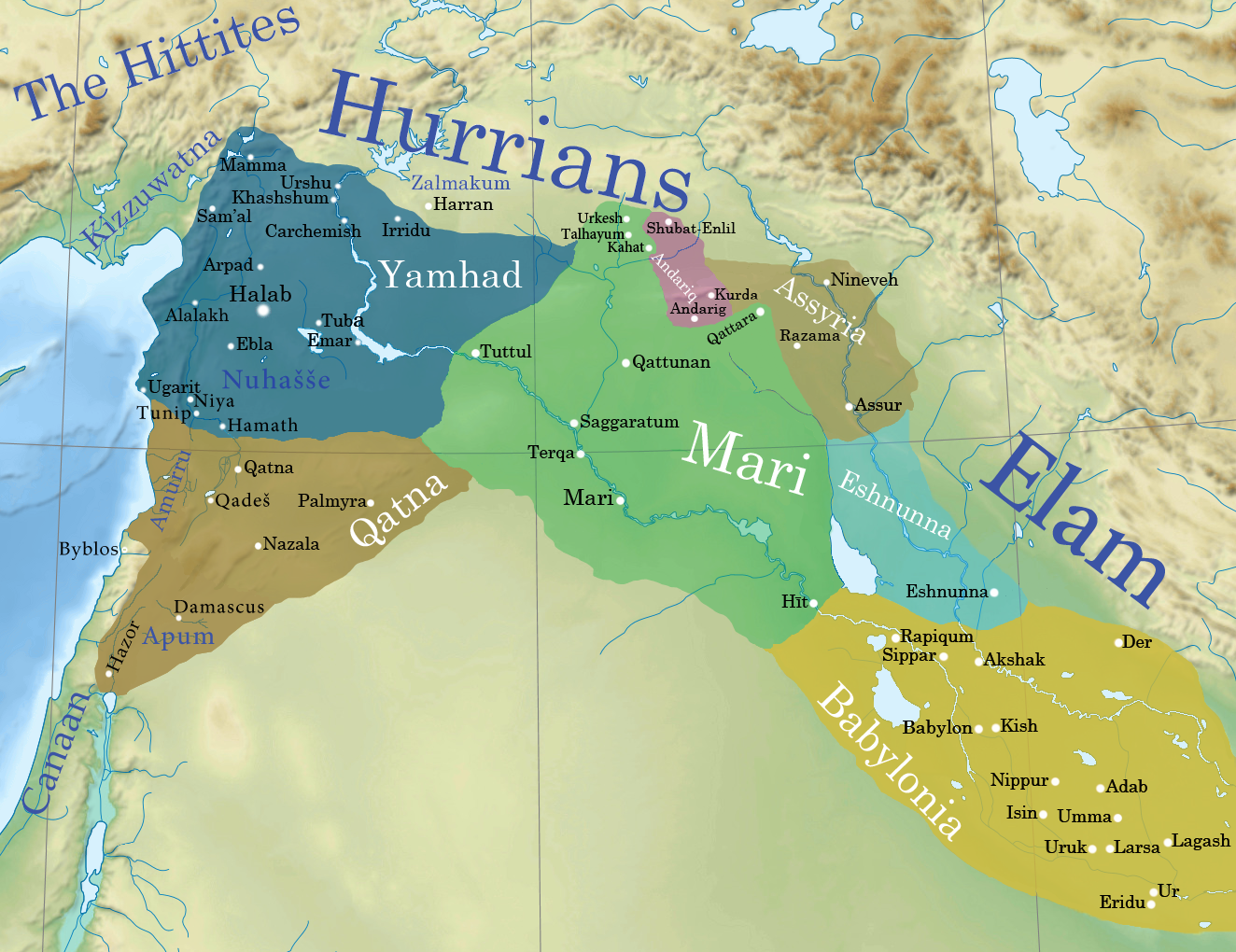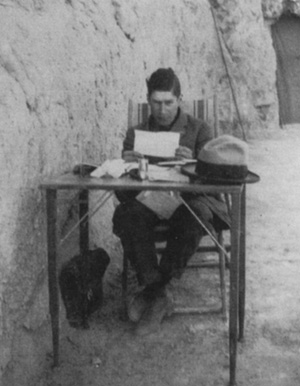|
Diyala River
The Diyala River (Arabic: ; ku, Sîrwan; Farsi: , ) is a river and tributary of the Tigris. It is formed by the confluence of Sirwan river and Tanjaro river in Darbandikhan Dam in the Sulaymaniyah Governorate of Northern Iraq. It covers a total distance of . Course It rises near Hamadan, in the Zagros Mountains of Iran. It then descends through the mountains, where for some 32 km it forms the border between the two countries. It finally feeds into the Tigris below Baghdad. Navigation of the upper reaches of the Diyala is not possible because of its narrow defiles, but the river's valley provides an important trade route between Iran and Iraq. The river flows southwest of the Hamrin Mountains. Name Its Aramaic origin is "Diyalas" and in Kurdish it is called "Sirwan", meaning 'roaring sea' or 'shouting river'. In early Islamic period, the lower course of the river formed part of the Nahrawan Canal. The Diyala Governorate in Iraq is named after the river. History Th ... [...More Info...] [...Related Items...] OR: [Wikipedia] [Google] [Baidu] |
Tigris River
The Tigris () is the easternmost of the two great rivers that define Mesopotamia, the other being the Euphrates. The river flows south from the mountains of the Armenian Highlands through the Syrian and Arabian Deserts, and empties into the Persian Gulf. Geography The Tigris is 1,750 km (1,090 mi) long, rising in the Taurus Mountains of eastern Turkey about 25 km (16 mi) southeast of the city of Elazığ and about 30 km (20 mi) from the headwaters of the Euphrates. The river then flows for 400 km (250 mi) through Southeastern Turkey before becoming part of the Syria-Turkey border. This stretch of 44 km (27 mi) is the only part of the river that is located in Syria. Some of its affluences are Garzan, Anbarçayi, Batman, and the Great and the Little Zab. Close to its confluence with the Euphrates, the Tigris splits into several channels. First, the artificial Shatt al-Hayy branches off, to join the Euphrates near Nasiriyah ... [...More Info...] [...Related Items...] OR: [Wikipedia] [Google] [Baidu] |
Nahrawan Canal
The Nahrevan Canal ( Persian: کانال نرهوان) was a major irrigation system of the Sassanid and early Islamic periods in central Iraq, along the eastern banks of the Tigris and the lower course of the Diyala River. Created in the 6th century, it reached its peak under the Abbasid Caliphate, when it served the main water supply for the Abbasid capital of Baghdad, while the regions irrigated by it served as the city's main breadbasket. Its destruction and progressive abandonment from the mid-10th century onwards mirror the Abbasid Caliphate's decline. History The first irrigation works along the Diyala River were undertaken in Parthian times. Indeed, it may be that the lower part of the Nahrawan Canal was originally the lower course of the Diyala.Morony (1993), pp. 912–913 The large-scale canal system of early medieval times however was created in the reign of the Sassanid ruler Khosrau I (), who also established it as a separate administrative district (''Bazidjan Khus ... [...More Info...] [...Related Items...] OR: [Wikipedia] [Google] [Baidu] |
University Of Chicago Oriental Institute
The Oriental Institute (OI), established in 1919, is the University of Chicago's interdisciplinary research center for ancient Near Eastern (" Orient") studies and archaeology museum. It was founded for the university by professor James Henry Breasted with funds donated by John D. Rockefeller, Jr. It conducts research on ancient civilizations throughout the Near East, including at its facility, Chicago House, in Luxor, Egypt. The institute publicly exhibits an extensive collection of artifacts related to ancient civilizations at its on-campus building in Hyde Park, Chicago. According to anthropologist William Parkinson of the Field Museum, the OI's highly focused "near Eastern, or southwest Asian and Egyptian" collection is one of the finest in the world. History In the early 20th century, James Henry Breasted built up the collection of the university's Haskell Oriental Museum, which he oversaw along with his field work, and teaching duties. He dreamed, however, of establis ... [...More Info...] [...Related Items...] OR: [Wikipedia] [Google] [Baidu] |
Eshnunna
Eshnunna (modern Tell Asmar in Diyala Governorate, Iraq) was an ancient Sumerian (and later Akkadian) city and city-state in central Mesopotamia Mesopotamia ''Mesopotamíā''; ar, بِلَاد ٱلرَّافِدَيْن or ; syc, ܐܪܡ ܢܗܪ̈ܝܢ, or , ) is a historical region of Western Asia situated within the Tigris–Euphrates river system, in the northern part of the F ... 12.6 miles northwest of Tell Agrab and 15 miles northwest of Tell Ishchali. Although situated in the Diyala Valley north-west of Sumer proper, the city nonetheless belonged securely within the Sumerian cultural milieu. It is sometimes, in archaeological papers, called Ashnunnak or Tuplias,. The tutelary deity of the city was Tishpak (Tišpak) (having replaced Ninazu) though other gods, including Sin (mythology), Sin, Adad, and Inanna of Kititum were also worshiped there. The personal goddess of the rulers were Belet-Šuḫnir and Belet-Terraban. History Early Bronze Inhabited s ... [...More Info...] [...Related Items...] OR: [Wikipedia] [Google] [Baidu] |
Larsa
Larsa (Sumerian logogram: UD.UNUGKI, read ''Larsamki''), also referred to as Larancha/Laranchon (Gk. Λαραγχων) by Berossos and connected with the biblical Ellasar, was an important city-state of ancient Sumer, the center of the cult of the sun god Utu. It lies some southeast of Uruk in Iraq's Dhi Qar Governorate, near the east bank of the Shatt-en-Nil canal at the site of the modern settlement Tell as-Senkereh or Sankarah. History The historical "Larsa" was already in existence as early as the reign of Eannatum of Lagash (reigned circa 2500–2400 BCE), who annexed it to his empire. The city became a political force during the Isin-Larsa period. After the Third Dynasty of Ur collapsed c. 2000 BC, Ishbi-Erra, an official of the last king of the Third Dynasty of Ur, Ibbi-Sin, relocated to Isin and set up a government which purported to be the successor to the Third Dynasty of Ur. From there, Ishbi-Erra recaptured Ur as well as the cities of Uruk and Laga ... [...More Info...] [...Related Items...] OR: [Wikipedia] [Google] [Baidu] |
Akkadian Empire
The Akkadian Empire () was the first ancient empire of Mesopotamia after the long-lived civilization of Sumer. It was centered in the city of Akkad () and its surrounding region. The empire united Akkadian and Sumerian speakers under one rule. The Akkadian Empire exercised influence across Mesopotamia, the Levant, and Anatolia, sending military expeditions as far south as Dilmun and Magan (modern Saudi Arabia, Bahrain, and Oman) in the Arabian Peninsula.Mish, Frederick C., Editor in Chief. "Akkad" ''Webster’s Ninth New Collegiate Dictionary''. ninth ed. Springfield, MA: Merriam-Webster 1985. ). The Akkadian Empire reached its political peak between the 24th and 22nd centuries BC, following the conquests by its founder Sargon of Akkad. Under Sargon and his successors, the Akkadian language was briefly imposed on neighboring conquered states such as Elam and Gutium. Akkad is sometimes regarded as the first empire in history, though the meaning of this term is not precis ... [...More Info...] [...Related Items...] OR: [Wikipedia] [Google] [Baidu] |
Early Dynastic Period (Mesopotamia)
The Early Dynastic period (abbreviated ED period or ED) is an archaeological culture in Mesopotamia (modern-day Iraq) that is generally dated to c. 2900–2350 BC and was preceded by the Uruk and Jemdet Nasr periods. It saw the development of writing and the formation of the first cities and states. The ED itself was characterized by the existence of multiple city-states: small states with a relatively simple structure that developed and solidified over time. This development ultimately led to the unification of much of Mesopotamia under the rule of Sargon, the first monarch of the Akkadian Empire. Despite this political fragmentation, the ED city-states shared a relatively homogeneous material culture. Sumerian cities such as Uruk, Ur, Lagash, Umma, and Nippur located in Lower Mesopotamia were very powerful and influential. To the north and west stretched states centered on cities such as Kish, Mari, Nagar, and Ebla. The study of Central and Lower Mesopotamia has l ... [...More Info...] [...Related Items...] OR: [Wikipedia] [Google] [Baidu] |
Jemdet Nasr
Jemdet Nasr ( ar, جمدة نصر) is a tell or settlement mound in Babil Governorate (Iraq) that is best known as the eponymous type site for the Jemdet Nasr period (3100–2900 BC), and was one of the oldest Sumerian cities. The site was first excavated in 1926 by Stephen Langdon, who found Proto-Cuneiform clay tablets in a large mudbrick building thought to be the ancient administrative centre of the site. A second season took place in 1928, but this season was very poorly recorded. Subsequent excavations in the 1980s under British archaeologist Roger Matthews were, among other things, undertaken to relocate the building excavated by Langdon. These excavations have shown that the site was also occupied during the Ubaid, Uruk and Early Dynastic I periods. History of research In 1925, the team that was excavating at Kish received reports that clay tablets and painted pottery had been found by locals at a site called Jemdet Nasr, some northeast of Kish. The site was sub ... [...More Info...] [...Related Items...] OR: [Wikipedia] [Google] [Baidu] |
Fall Of Baghdad (1917)
The Fall of Baghdad (11 March 1917) occurred during the Mesopotamia Campaign, fought between the forces of the British Empire and the Ottoman Empire in the First World War. Arrival of General Sir Frederick Stanley Maude After the surrender of the Kut garrison on 29 April 1916, the British Army in Mesopotamia underwent a major overhaul. A new commander, Lieutenant General Sir Frederick Stanley Maude, was given the job of restoring Britain's military reputation. General Maude spent the rest of 1916 rebuilding his army. Most of his troops were recruited in India and then sent by sea to Basra. While these troops were being trained, British military engineers built a field railway from the coast up to Basra and beyond. General Maude also obtained a small force of armed river boats and river supply ships. The British launched their new campaign on 13 December 1916. The British had some 50,000 well-trained and well-equipped troops: mostly British India troops of the Indian Expedit ... [...More Info...] [...Related Items...] OR: [Wikipedia] [Google] [Baidu] |
Battle Of Diyala River
The Battle of Diyala River took place in 693 BC between the forces of the Neo-Assyrian Empire and the Elamites of southern Iran. Assyrian expansion From the 9th century BC onwards, the Assyrians had been expanding their domain from northern Mesopotamia into Judea and Babylon. After defeating the Babylonians in 689 BC, King Sennacherib sought to punish the Kingdom of Elam for its support towards Babylonia. Battle Prior to the battle, Sennacherib had sacked a number of Elamite settlements in 694 BC in an attempt to assert his authority over the region. Despite this, the Elamites, with their Chaldean allies from Babylon, managed to raise an army and met the Assyrian forces of Sennacherib in 693 BC at the Diyala River. According to the Assyrian account of the battle, the Elamites were heavily defeated. However, many historians believe that the Assyrians suffered heavy casualties since they failed to launch any invasions in 692 BC. In 647 BC, the Assyrians returned and this time des ... [...More Info...] [...Related Items...] OR: [Wikipedia] [Google] [Baidu] |
Cyrus The Great
Cyrus II of Persia (; peo, 𐎤𐎢𐎽𐎢𐏁 ), commonly known as Cyrus the Great, was the founder of the Achaemenid Empire, the first Persian empire. Schmitt Achaemenid dynasty (i. The clan and dynasty) Under his rule, the empire embraced all of the previous civilized states of the ancient Near East, expanded vastly and eventually conquered most of Western Asia and much of Central Asia. Spanning from the Mediterranean Sea and Hellespont in the west to the Indus River in the east, the empire created by Cyrus was the largest the world had yet seen. At its maximum extent under his successors, the Achaemenid Empire stretched from parts of the Balkans ( Eastern Bulgaria– Paeonia and Thrace–Macedonia) and Southeast Europe proper in the west to the Indus Valley in the east. The reign of Cyrus lasted about thirty years; his empire took root with his conquest of the Median Empire followed by the Lydian Empire and eventually the Neo-Babylonian Empire. He also led an expedi ... [...More Info...] [...Related Items...] OR: [Wikipedia] [Google] [Baidu] |
Histories (Herodotus)
The ''Histories'' ( el, Ἱστορίαι, ; also known as ''The History'') of Herodotus is considered the founding work of history in Western literature. Written around 430 BC in the Ionic dialect of classical Greek, ''The Histories'' serves as a record of the ancient traditions, politics, geography, and clashes of various cultures that were known in Greece, Western Asia and Northern Africa at that time. Although not a fully impartial record, it remains one of the West's most important sources regarding these affairs. Moreover, it established the genre and study of history in the Western world (despite the existence of historical records and chronicles beforehand). ''The'' ''Histories'' also stands as one of the earliest accounts of the rise of the Persian Empire, as well as the events and causes of the Greco-Persian Wars between the Persian Empire and the Greek city-states in the 5th century BC. Herodotus portrays the conflict as one between the forces of slavery (the ... [...More Info...] [...Related Items...] OR: [Wikipedia] [Google] [Baidu] |








